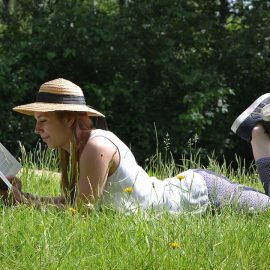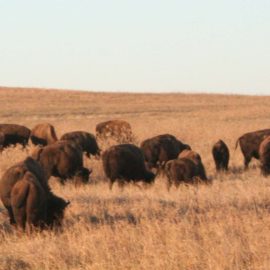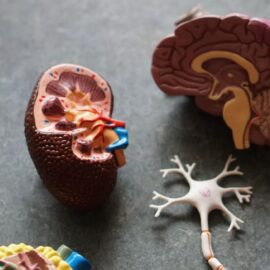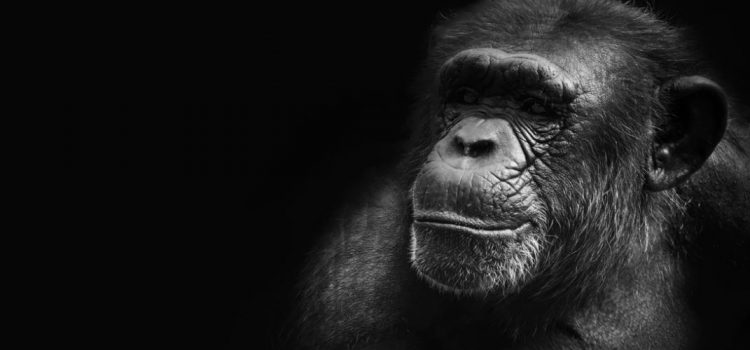
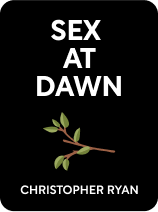
This article is an excerpt from the Shortform book guide to "Sex at Dawn" by Christopher Ryan and Cacilda Jethá. Shortform has the world's best summaries and analyses of books you should be reading.
Like this article? Sign up for a free trial here .
What can the sociosexual habits of apes teach us about the evolution of human sexuality? Were the authors of Sex at Dawn right to compare the habits of humans and apes?
In the book Sex at Dawn, authors Ryan and Jethá say they can disprove the standard narrative of human sexuality by looking at the sociosexual habits of great apes, specifically chimpanzees and bonobos. However, other scientists have questioned Ryan and Jethá’s conclusions.
Keep reading for Ryan and Jethá’s findings.
Evidence From Great Apes
To refute the standard narrative of the history of human sexuality, Ryan and Jethá use evidence from three sources: the sociosexual habits of great apes with close genetic links to humans, observations of remote hunter-gatherer societies, and human biology.
We’ll begin by comparing humans and apes and examining the evidence from the great apes: specifically, chimpanzees and bonobos, which are species with non-monogamous (or multimale-multifemale) mating systems.
Chimpanzees
According to the authors, twentieth-century scientists thought chimpanzees were a nearly perfect model of ancient, unrestrained, “primal” humans because while they exhibit very human behaviors, they’re far less inhibited and more openly brutal than modern humans. These scientists also speculated that chimps’ approach to sex must represent ancient humans’ primal reproductive instincts: instincts that we still have, but repress.
(Shortform note: This belief that chimp behavior—sexual or otherwise—is equivalent to primal human behavior is why, in The Chimp Paradox, psychiatrist Steve Peters refers to humans’ most instinctive urges and emotional reactions as the “Inner Chimp” that must be controlled by the rational “Inner Human.”)
The authors note that chimps are quite promiscuous, and female chimpanzees often mate multiple times per day with various males. However, sex for chimpanzees is almost exclusively reproductive—female chimps are only sexually active during the fertile period of their menstrual cycles. (Shortform note: While female chimps may attempt promiscuity while fertile, they’re not always successful. Aggressive male chimpanzees have been known to physically restrain ovulating females to prevent them from mating with other males in the community.)
Bonobos
Ryan and Jethá note that, like chimpanzees, bonobos are famously promiscuous. However, for bonobos, sex serves important purposes beyond reproduction: It’s the social glue that holds the group together. This is evident in the fact that bonobos also engage in other forms of sexual intimacy to cement their bond, like kissing and looking into one another’s eyes while mating. (Shortform note: Bonobos’ non-reproductive approach to sex goes even further: Other researchers have observed bonobos engaging in oral sex and even making sex toys out of fallen tree branches. Bonobos also frequently engage in female-female and male-male sexual contact.)
Crucially, bonobos don’t exhibit the same patterns of male aggression, jealousy, and attempts to control female sexuality that we see in humans. The authors believe this means that these social patterns are rooted in our modern culture, not ancient biology. (Shortform note: Some reviewers have questioned this conclusion because scientists have observed aggression in wild bonobos. According to anthropologist Ryan Ellsworth, Ryan and Jethá gave a purposefully incomplete overview of the evidence from great apes in order to make their point.)
From Great Apes to Humans
While chimpanzees and bonobos—our two closest evolutionary cousins—have different approaches to sex and reproduction, they both practice the same multimale-multifemale mating system. Thus, the authors conclude that this is the most natural mating system for social primates—including humans.
(Shortform note: In her review of Sex at Dawn, Emily Nagoski takes issue with this conclusion. She argues that primate sexuality is meant to adapt to the social context. In other words, for primates, sex can serve whatever purpose we need or want it to serve (such as reproduction, pleasure, or control) depending on our circumstances and relationships. That means that, while one mating system may be “natural” for bonobos and chimps, that doesn’t mean the same system is “natural” for humans, who have much more complex social systems.)

———End of Preview———
Like what you just read? Read the rest of the world's best book summary and analysis of Christopher Ryan and Cacilda Jethá's "Sex at Dawn" at Shortform .
Here's what you'll find in our full Sex at Dawn summary :
- Why everything we think we know about prehistoric human sexuality is wrong
- Why so many marriages end in divorce
- How humans are designed to be polygamous

